Are you tired of spending money on expensive car repairs? Do you want to save time and effort by doing repair work yourself? If so, then knowing how to work under a car without a lift is essential.
Working under a car without a lift can be daunting, but it is feasible with the right approach and tools. Many car enthusiasts and DIY mechanics often find themselves in situations where they need access to a professional lift. This means that maintenance, repairs, or upgrades are within reach.
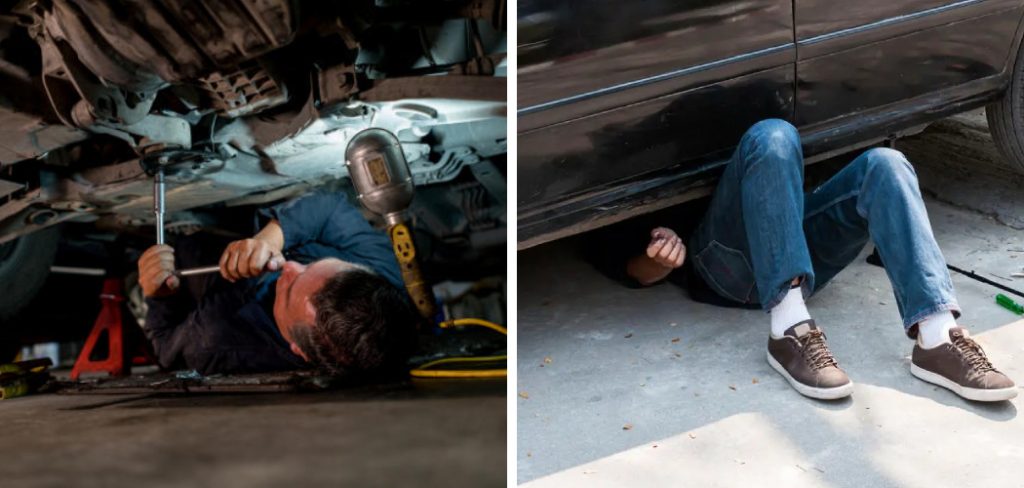
With a focus on safety, efficiency, and correctly using equipment such as jack stands and wheel ramps, even complex undercarriage tasks can be performed in the comfort of your own garage or driveway.
What are the Benefits of Working In a Car Without a Lift?
There are several benefits to knowing how to work under a car without a lift. Firstly, it can save you money on expensive repairs and maintenance costs. By doing the work yourself, you also have more control over the quality of the repair work being done. You can choose the parts and materials used, ensuring your car gets the best care without breaking the bank.
Secondly, working in a car without a lift can save you time and hassle. You don’t have to schedule an appointment at a repair shop or wait for your car to be serviced. You also don’t have to spend time and money on transportation while your car is being repaired. Plus, if you’re an experienced DIY mechanic, you can complete the work faster than a professional.
Overall, working under a car without a lift can give you more independence and control over your vehicle. It also allows you to build valuable skills and knowledge about your car, making you a more confident and capable car owner.
What Will You Need?
Before diving into the steps of working under a car without a lift, gathering all the necessary equipment and tools is essential. These are some of the items you’ll need to complete your repairs safely and effectively:
- Jack Stands are Crucial for Supporting Your Vehicle While Working underneath it. Choose sturdy and reliable jack stands that can hold the weight of your car.
- Wheel Ramps: Wheel ramps are an excellent alternative to jack stands, especially for tasks that don’t require the entire underside of the car to be accessible. They can also provide a more comfortable and secure working position than a jack stand.
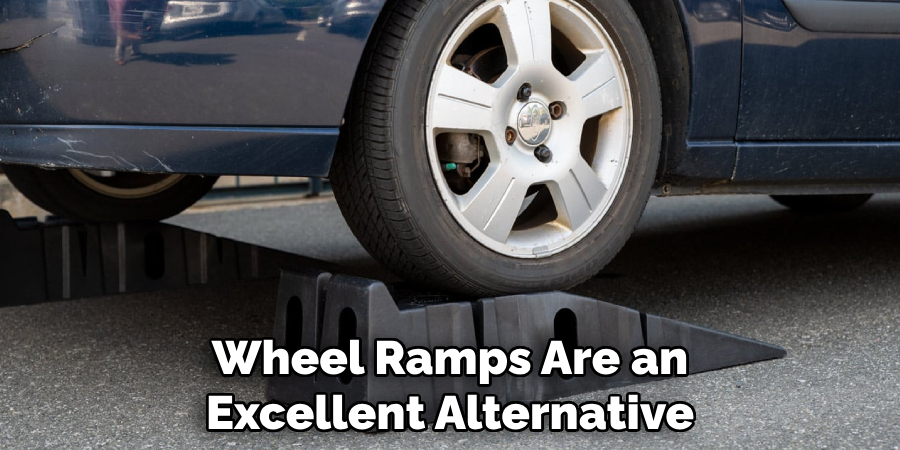
- Rolling Creeper: A rolling creeper is a low-profile platform with wheels that allows you to slide under the car while working comfortably. It provides support and mobility, making reaching different areas of the undercarriage easier.
- Mechanic’s Gloves: These will protect your hands from dirt, grime, and sharp edges while working on your car.
- Flashlight: A good source of light is essential when working in dimly lit areas under your car.
- Safety Glasses: Safety should always be a top priority, so make sure to wear safety glasses to protect your eyes from debris and fluids while working.
- Basic Hand Tools: These include socket wrenches, adjustable wrenches, screwdrivers, pliers, etc. Ensure you have these tools for any necessary repairs or adjustments.
Once you have all the necessary equipment, you’re ready to start working under your car without a lift.
10 Easy Steps on How to Work Under a Car Without a Lift
Step 1. Ensure a Flat and Firm Surface:
Before attempting any work under your car, ensure it is parked on a stable, level surface. Uneven or soft ground can cause instability, especially when using jack stands or wheel ramps, thus increasing the risk of injury or damage. Additionally, always engage the parking brake and use wheel chocks to prevent the car from rolling.
Step 2. Lift the Car Safely:
After ensuring the car is securely parked on a solid surface with the parking brake engaged and wheel chocks in place, begin lifting the car. If using jack stands, position the jack under the car at the designated lifting points, which are typically mentioned in the vehicle’s manual. Lift the car gradually, double-checking stability before placing the jack stands under the frame or axle. Alternatively, if using wheel ramps, drive the car up the ramps slowly and carefully until it’s in a stable position. Always double-check that the vehicle is securely supported before proceeding to work underneath it.
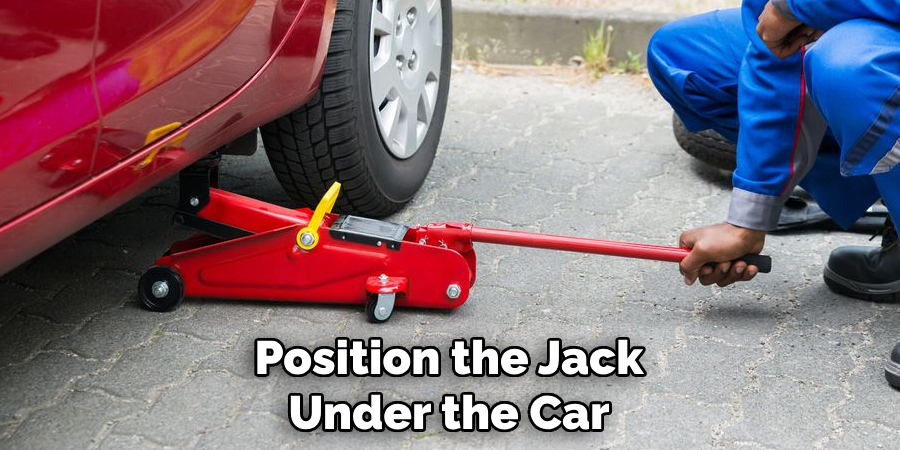
Step 3. Position Yourself Safely Under the Car:
Once the car is lifted and securely supported, it’s time to position yourself to begin the work. Using a rolling creeper is highly recommended for comfort and ease of movement. Carefully slide under the car with all necessary tools within reach. Ensure you have a clear exit path in case you need to quickly move out from under the car. Safety should be your top priority, so never position yourself directly under heavy components that could cause injury if they were to fall.
Step 4. Inspect the Undercarriage for Any Obvious Issues:
Before proceeding with any specific repairs or maintenance tasks, take a moment to thoroughly inspect the undercarriage of your car. Look for any signs of wear and tear, such as leaks, rust, or damaged parts. Identifying any potential issues at this stage can save time and prevent further damage. Use your flashlight to check hard-to-see areas and ensure you comprehensively understand the car’s condition before moving forward with your work.
Step 5. Start with Minor Repairs or Maintenance Tasks:
Begin your work under the car by tackling smaller, less complex tasks. This could involve changing the oil, replacing the oil filter, or inspecting the exhaust system for any faults. Focusing on these minor repairs first lets you get comfortable working in the space and familiarize yourself with the car’s undercarriage layout. It also helps in gradually building up your confidence and skill set before moving on to more significant repairs. Ensure all the necessary tools and parts are within reach before you start, and follow the manufacturer’s guidelines for each task to ensure safety and accuracy.
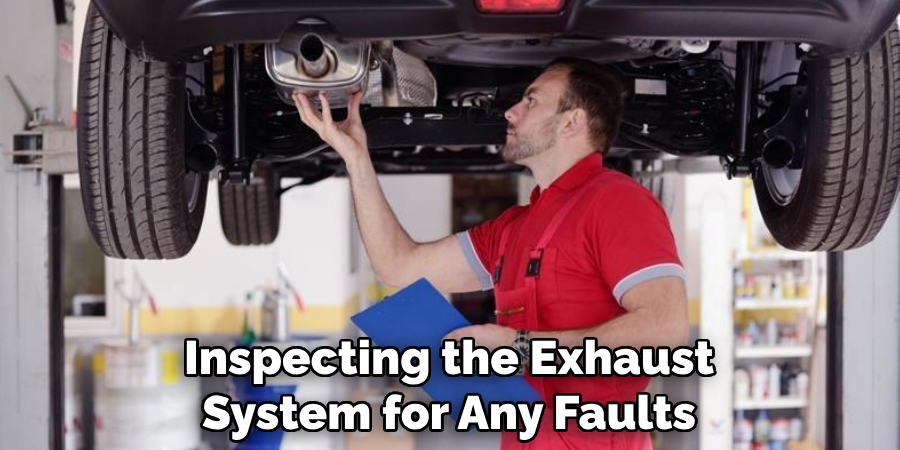
Step 6. Proceed with More Complex Tasks as Confidence Grows:
After you’ve successfully completed some of the simpler maintenance tasks, you might feel ready to tackle more complex repairs. This could include tasks like changing brake pads, inspecting and replacing suspension components, or dealing with transmission issues. Always ensure you fully understand the process and have all the necessary tools and replacement parts before starting. If at any point you feel unsure, it’s wise to consult a professional or refer to a detailed guide specific to your car model. Remember, experience comes with time, and every task you complete successfully builds your skills and confidence further.
Step 7. Regularly Check Tools and Equipment for Safety:
While progressing through your repair tasks, it’s critical to periodically pause and inspect your tools and support equipment. Make sure that everything is functioning correctly and remains in a safe condition to use. This includes checking jack stands for stability, ensuring the creeper wheels move freely without obstruction, and verifying that hand tools have not incurred damage that could make them hazardous to use. Regular checks help prevent accidents caused by equipment failure and ensure you can continue working safely under your car.
Step 8. Take Breaks When Needed to Avoid Fatigue:
It’s important to listen to your body and take short breaks as needed during extensive work sessions under your car. Fatigue can lead to a decrease in concentration and an increase in the likelihood of accidents or mistakes. Whether stepping out for fresh air, stretching your limbs, or simply taking a moment to rest and hydrate, breaks are essential for maintaining peak mental and physical condition. Ensure you use this time to also step back and review the work completed, ensuring everything is going according to plan.

Step 9. Reassess the Situation and Double-check Your Work:
Once you’ve completed the intended repair or maintenance tasks, it’s crucial to reassess the situation before lowering your car. Double-check your work, ensuring every component has been properly installed and secured. For instance, if you’ve changed the oil, ensure the oil filter is tight and there are no leaks. If you’ve worked on the brakes, confirm that all parts are reassembled correctly and that there’s no obstruction. This step is vital for preventing potential issues when you start driving the car again. It’s always better to take extra time for verification than to face problems on the road.
Step 10. Carefully Lower the Car to the Ground:
After ensuring that all repair and maintenance tasks have been completed correctly and double-checked, it’s time to safely lower the car back to the ground. If using jack stands, carefully remove them from under the car, ensuring you maintain control of the vehicle at all times. Gradually lower the jack, allowing the car to come to rest evenly on the ground. If using ramps, ensure the area is clear before slowly driving the car down. Once the car is fully lowered, give it a final visual inspection to ensure everything appears as it should. This step is crucial in wrapping up your maintenance session safely and effectively.
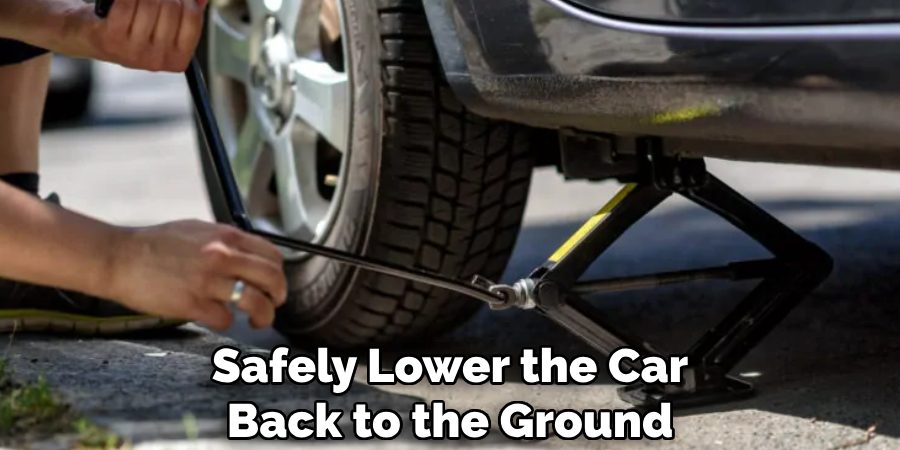
You can confidently and successfully work under your car by following these steps and taking proper safety precautions.
5 Additional Tips and Tricks
- Utilize Jack Stands Safely: Always support the vehicle with jack stands. Never rely solely on a hydraulic jack. Place the jack stands under the vehicle’s designated support points to ensure stability and prevent the car from falling.
- Employ Wheel Chocks: Place wheel chocks around the wheels remaining on the ground to prevent the car from rolling. This is a critical safety measure when working under a vehicle.
- Lighting is Key: Good lighting is essential for safely working under a car. Use a high-quality, portable work light to illuminate the area you’re working in. LED lights are recommended for their brightness and efficiency.
- Wear Appropriate Safety Gear: Protect yourself by wearing the right safety gear, including gloves to protect your hands, goggles to shield your eyes from debris, and a dust mask if you’re working in a dusty environment.
- Keep a Clean Workspace: Ensure your work area is tidy and free of any unnecessary tools or equipment. A cluttered space can be a safety hazard and make moving around freely under the car difficult.
With these additional tips and tricks, you can safely and effectively work under a car without a lift.
5 Things You Should Avoid
- Ignoring Vehicle Stability: Only start working under a car by double-checking its stability on the jack stands. Ignoring this could lead to serious injury if the vehicle slips or falls.
- Using Makeshift Supports: Avoid using bricks, wooden blocks, or any unstable materials as supports for your vehicle. These can easily shift or collapse under the weight of the car.
- Rushing the Setup: Take your time with the process of lifting and securing the car. Improper setup can lead to accidents. Take your time to ensure everything is done correctly and safely.
- Wearing Loose Clothing or Jewelry: Loose clothing and jewelry can easily get caught in moving parts or tools. Wear fitted clothing and remove any jewelry before starting your work to prevent accidents.
- Skipping Safety Gear: Remember to consider the importance of wearing safety gear. Skipping out on safety glasses, gloves, or proper footwear can result in injuries from falling objects, chemical spills, or sharp edges.
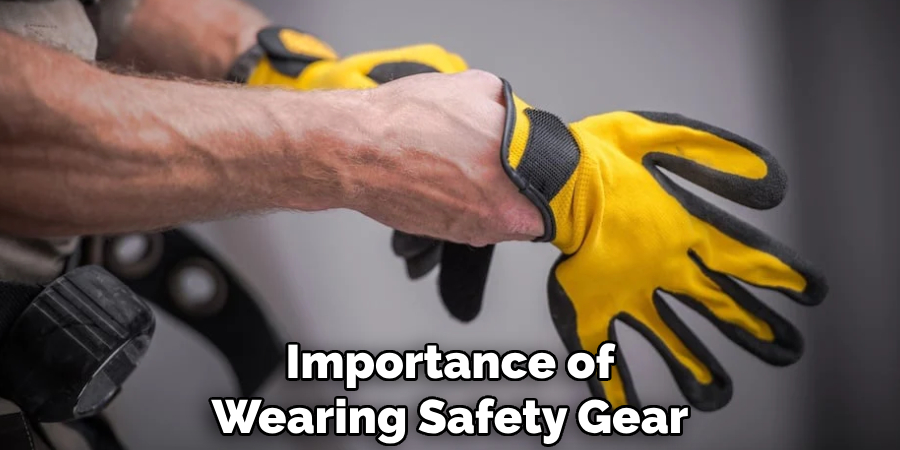
- Working Alone: Working with a partner when working under a car is always best. In case of an emergency, having someone else present can make all the difference. If you have no choice but to work alone, make sure to have a phone nearby for easy access in case of an accident.
Avoiding these common mistakes can ensure a safe and successful experience while working under a car without a lift.
What is the Alternative to a 4 Post Lift?
If you don’t have access to a 4-post lift, there are other options available for lifting and supporting your vehicle. Some alternatives include:
- 2 Post Lift: Similar to a four post lift, but with only two posts for support. This option is better suited for larger vehicles requiring more clearance.
- Scissor Lift: These lifts use a scissor-like mechanism to raise and lower the vehicle. They are compact and portable, making them a good option for smaller garages.
- Jack Stands with Floor Jack: As discussed earlier, using jack stands with a floor jack is a budget-friendly alternative to a lift. Just make sure to follow proper safety precautions when using this method.
- Ramps: Ramps are another budget-friendly option for elevating your car. They provide a gradual incline for easy access under the vehicle.
Ultimately, the best alternative will depend on your specific needs and the type of work you’ll be doing. Consider factors such as space, budget, and the weight and size of your vehicle when choosing an alternative to a 4-post lift.
What Can You Use if You Don’t Have a Jack Stand?
If you don’t have access to jack stands, there are still ways to safely elevate and support your vehicle. Some options include:
- Bricks or Wooden Blocks: While not recommended as a primary support method, bricks or wooden blocks can be used in conjunction with other supports for added stability.
- Tire Replacement Tools: Some vehicles have special tools for changing a tire, such as a scissor jack or spare tire winch. These can also be used to lift and support the vehicle for minor repairs.
- Axle Stands: If you have access to axle stands, these can serve as an alternative to traditional jack stands. Just make sure to follow proper safety precautions when using them.

Remember, no matter what method you use to support your vehicle, it’s crucial to prioritize safety and double-check the car’s stability before starting any work. Overall, working under a car without a lift can be done safely and effectively with the right tools and precautions.
Conclusion
Working under a car without a lift can seem daunting at first, but with the right approach and tools, it’s entirely feasible and can be done safely. By prioritizing stability with properly placed jack stands, employing wheel chocks, and illuminating your workspace, you can create a safe environment for car maintenance. Adherence to safety gear protocols must be balanced, as personal protection is paramount. Additionally, avoiding shortcuts, such as using unstable supports or rushing the setup, further ensures your safety.
Whether conducting a simple oil change or something more complex, understanding and implementing these guidelines will serve you well. Ultimately, the key to success lies in meticulous preparation, patience, and an unwavering commitment to safety.
Hopefully, the article on how to work under a car without a lift has provided valuable information and tips to make your next car maintenance project a success. Now, get out there and confidently tackle those repairs! So, always remember to prioritize safety while working under a vehicle and follow these tips for a successful and safe experience. Happy wrenching!

Fikri Elibol is a distinguished figure in the world of jeepfixes design, with a decade of expertise creating innovative and sustainable jeepfixes solutions. His professional focus lies in merging traditional craftsmanship with modern manufacturing techniques, fostering designs that are both practical and environmentally conscious. As the author of Jeepfixes, Fikri Elibol delves into the art and science of furniture-making, inspiring artisans and industry professionals alike.
Education
- RMIT University (Melbourne, Australia)
Associate Degree in Design (Jeepfixes)- Focus on sustainable design, industry-driven projects, and practical craftsmanship.
- Gained hands-on experience with traditional and digital manufacturing tools, such as CAD and CNC software.
- Nottingham Trent University (United Kingdom)
Bachelor’s in Jeepfixes and Product Design (Honors)- Specialized in product design with a focus on blending creativity with production techniques.
- Participated in industry projects, working with companies like John Lewis and Vitsoe to gain real-world insights.
Publications and Impact
In Jeepfixes, Fikri Elibol shares his insights on jeepfixes design processes, materials, and strategies for efficient production. His writing bridges the gap between artisan knowledge and modern industry needs, making it a must-read for both budding designers and seasoned professionals.
